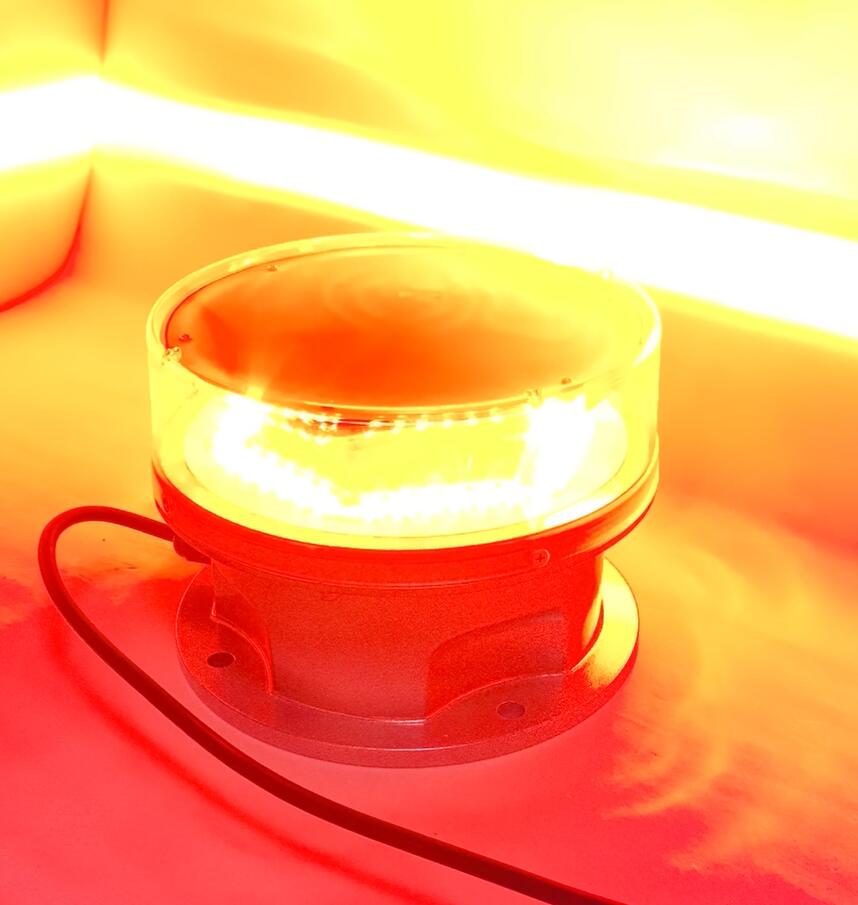Obstruction lights are critical for aviation and structural safety, ensuring tall buildings, towers, and wind turbines remain visible to aircraft. While their importance is undisputed, understanding the factors influencing obstruction light cost is essential for businesses, engineers, and project planners. This article explores the variables affecting expenses, cost-saving strategies, and industry best practices—without focusing on specific price points.
Factors Influencing Obstruction Light Cost
1. Light Type and Intensity
Low-Intensity Lights: Typically used for structures under 45 meters; lower operational and installation expenses.
Medium- and High-Intensity Lights: Required for taller structures, involving more advanced technology and higher energy consumption.

2. Power Source
AC-Powered Lights: Common in urban areas with reliable electricity but may require additional wiring.
Solar-Powered Lights: Ideal for remote locations, reducing long-term energy costs but with higher initial setup requirements.
3. Compliance with Aviation Regulations
FAA (U.S.), ICAO (Global), and EASA (Europe): Different regions have varying standards, affecting design and certification costs.
| obstruction light cost |
Recurring Compliance Checks: Regular inspections and approvals may add to long-term expenses.
4. Durability and Maintenance
Weather Resistance: Lights designed for extreme conditions (hurricanes, Arctic cold) may have higher upfront costs but lower maintenance needs.
Self-Cleaning & Anti-Corrosion Features: Reduce servicing frequency, impacting lifecycle costs.
5. Smart Technology Integration
IoT-Enabled Monitoring: Allows remote diagnostics, reducing manual inspections but requiring initial tech investment.
| obstruction lights cost |
Adaptive Lighting Systems: Adjust brightness based on visibility conditions, optimizing energy use.
Strategies to Optimize Obstruction Light Expenses
1. Conduct a Site-Specific Needs Assessment
Not all structures require high-intensity lighting. Proper evaluation ensures compliance without overspending.
2. Invest in Energy-Efficient Models
LED-based obstruction lights consume less power, lowering operational costs over time.
3. Prioritize Long-Term Reliability Over Short-Term Savings
Cheaper models may fail prematurely, leading to replacement and labor costs.
4. Explore Modular and Scalable Solutions
Some systems allow incremental upgrades, avoiding complete overhauls when regulations change.
5. Leverage Government and Industry Incentives
Certain regions offer subsidies for solar-powered or energy-efficient aviation lighting.
Industry Trends Impacting Future Costs
1. Advancements in Solar Technology
More efficient solar panels and batteries are making off-grid obstruction lights more viable.
2. AI and Predictive Maintenance
Machine learning can forecast potential failures, reducing unexpected repair costs.
3. Standardization of Global Regulations
Harmonized aviation rules could streamline certification and reduce compliance expenses.
While obstruction light cost is influenced by multiple variables—intensity, power source, compliance, and technology—strategic planning can optimize investments. By focusing on durability, energy efficiency, and smart monitoring, businesses can balance safety requirements with financial efficiency.
As technology evolves, smarter and more sustainable solutions will continue to reshape the economics of obstruction lighting, ensuring safer skies without unnecessary expenditures.